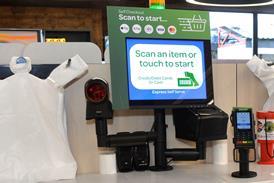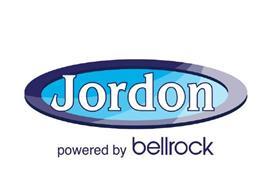All of those desperate economic rescue initiatives from November onwards - you remember - slashing base rate by several percentage points, pumping billions into the retail environment through the VAT rate cut, industry after industry pleading for bail out. And that was before Woolies went to the wall. We might have guessed that the government had seen some then-unpublished economic figures and realised that they were staring into the abyss. Then in December we saw our own Database figures from October’s trading results, and realised just how dramatically things seemed to have crashed.
The first thing that grabbed our attention was fuel volume - below 300,000 litres for the month on our average site. We hadn’t seen an October figure that low since the mid 1990s. The sheer size of the drop compared to October 2007 (almost 35%) made us look twice just to check that we hadn’t missed something. And yet there it was in black and white: petrol volumes down by 33.1% and diesel volume down by 36.6%. Okay so fuel prices fell quite rapidly during November and into the early part of December, but it’s anybody’s guess whether that in itself will bring volumes back. Bear in mind that the sort of forecourts we’re looking at are typical suburban or main road sites where, unlike the hypermarkets, we still see a high proportion of HGVs and delivery vans at the pumps. When these trade users are themselves suffering a severe slump in activity they’re going to be buying less fuel - so in reality that means diesel volumes are likely to drop further in the next few months.
Incidentally, as we’ve already mentioned, these non-hypermarket fuel volumes depend on many business customers who naturally reclaim the VAT on their fuel purchases to keep their overall cost down. Thanks to the Chancellor’s ’VAT trick’ they still pay the same pump price as they’d have done before, but actually have less VAT to reclaim (they can’t reclaim the additional duty that was put up when the VAT came down). So all business users of fuel have seen their net fuel price actually rise!
Presumably the Chancellor expected wholesale fuel prices to keep falling, what with oil down to around $40/barrel instead of the $150-plus that it hit last summer, and that nobody would notice the effects of the duty hike. However, as this is being written, the recent price falls on the forecourt have flattened-out somewhat, and if OPEC manages to get its act together then oil prices will probably have reached the bottom of the price trough, barring any further major economic disasters.
Perhaps surprisingly in view of the drastic fuel volume drop, our shop sales figures weren’t quite as catastrophically down as might have been expected. They were 11% below October ’07’s which was some relief, albeit that once you adjust for RPI the real drop was more like 15%. It does suggest however that perhaps the forecourt shop still has some hard-core customers who are not going to abandon it, whatever they do in terms of cutting back on fuel purchases. However this was before the VAT change on tobacco and alcohol. But here again the sales prices were supposed to stay the same with additional duty replacing the small cut in output VAT - but retailers have mentioned that the tobacco suppliers took this opportunity to add a penny or two onto each packet.
So what have retailers done in the face of this fall in business? Well one immediate answer is in our monthly wage cost figures - down 9.2% on a year earlier, despite the National Minimum Wage increase on October 1. With lower volumes and shop sales, many retailers have simply cut staff hours in response. Individual retailers have been telling us that they’ve simply been spending a bit more time in the shop themselves.
Naturally, with sales down, they’ve also looked at cutting opening hours where possible. Interestingly few retailers say that they’ve actually laid-off staff - the majority are simply cutting back on overtime hours and double manning. If trading gets any worse, that’ll be when they look at taking people off the payroll completely.
All in all a very bleak picture. The only slight sign of encouragement is that at least customers haven’t abandoned their local forecourts altogether.























No comments yet